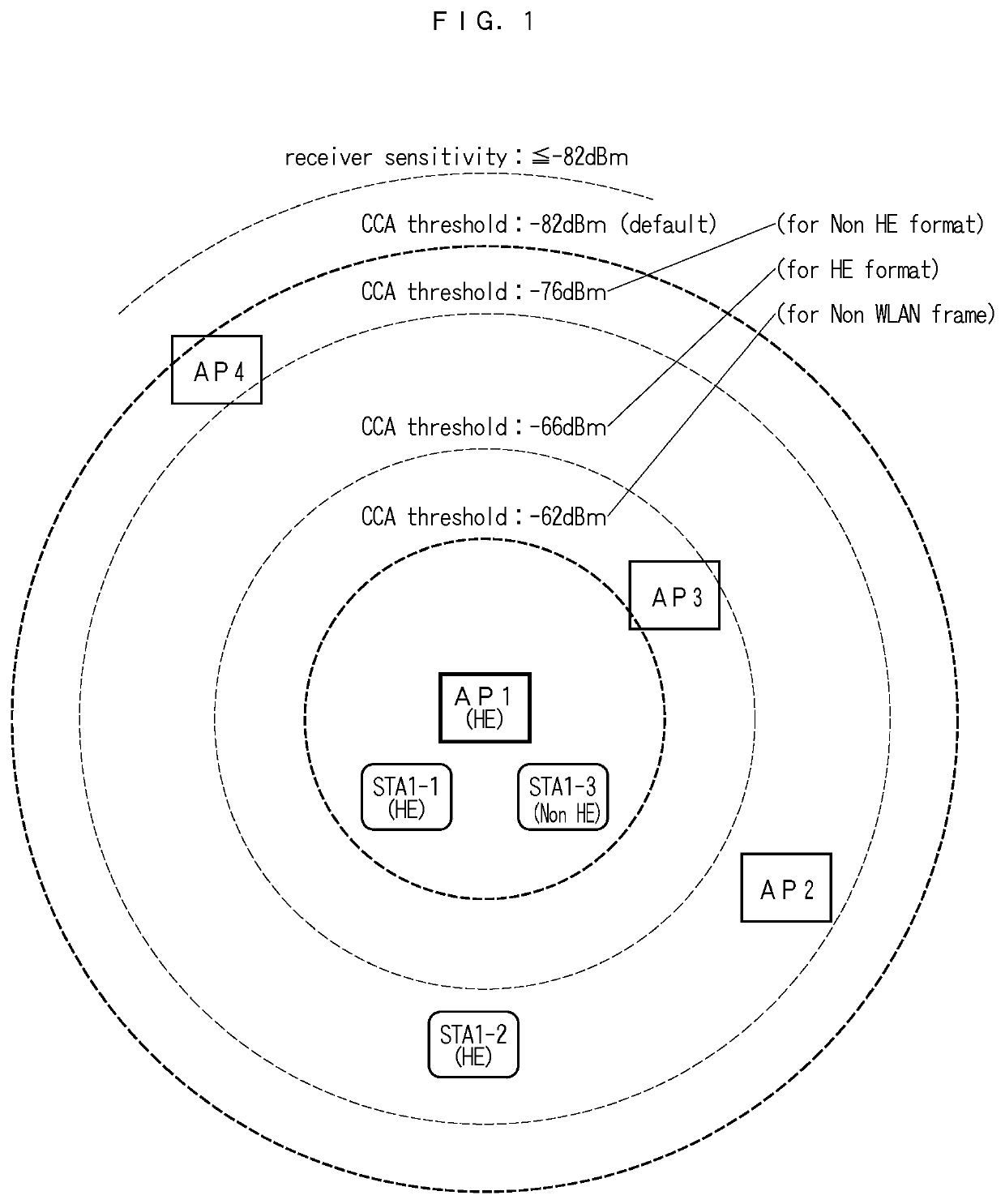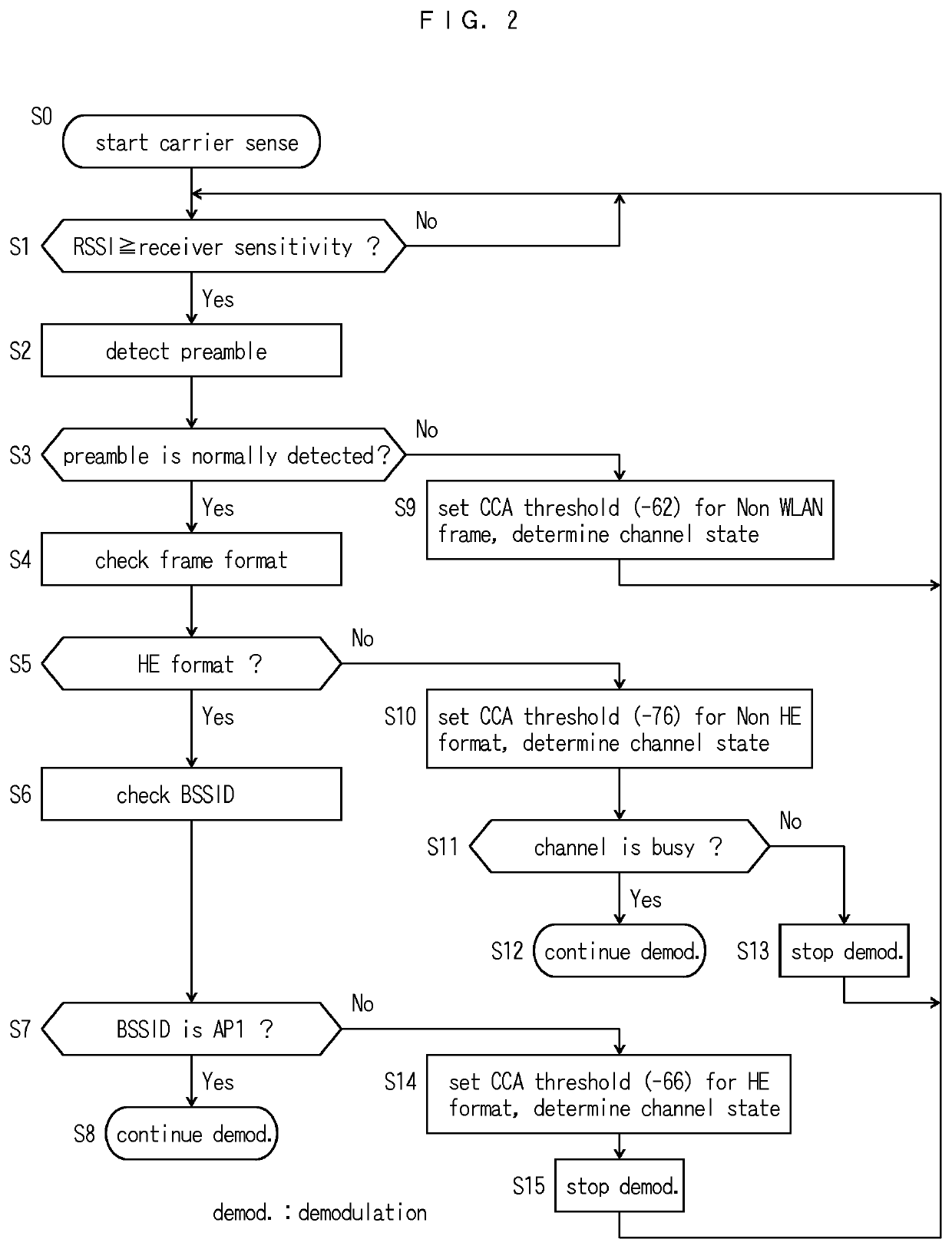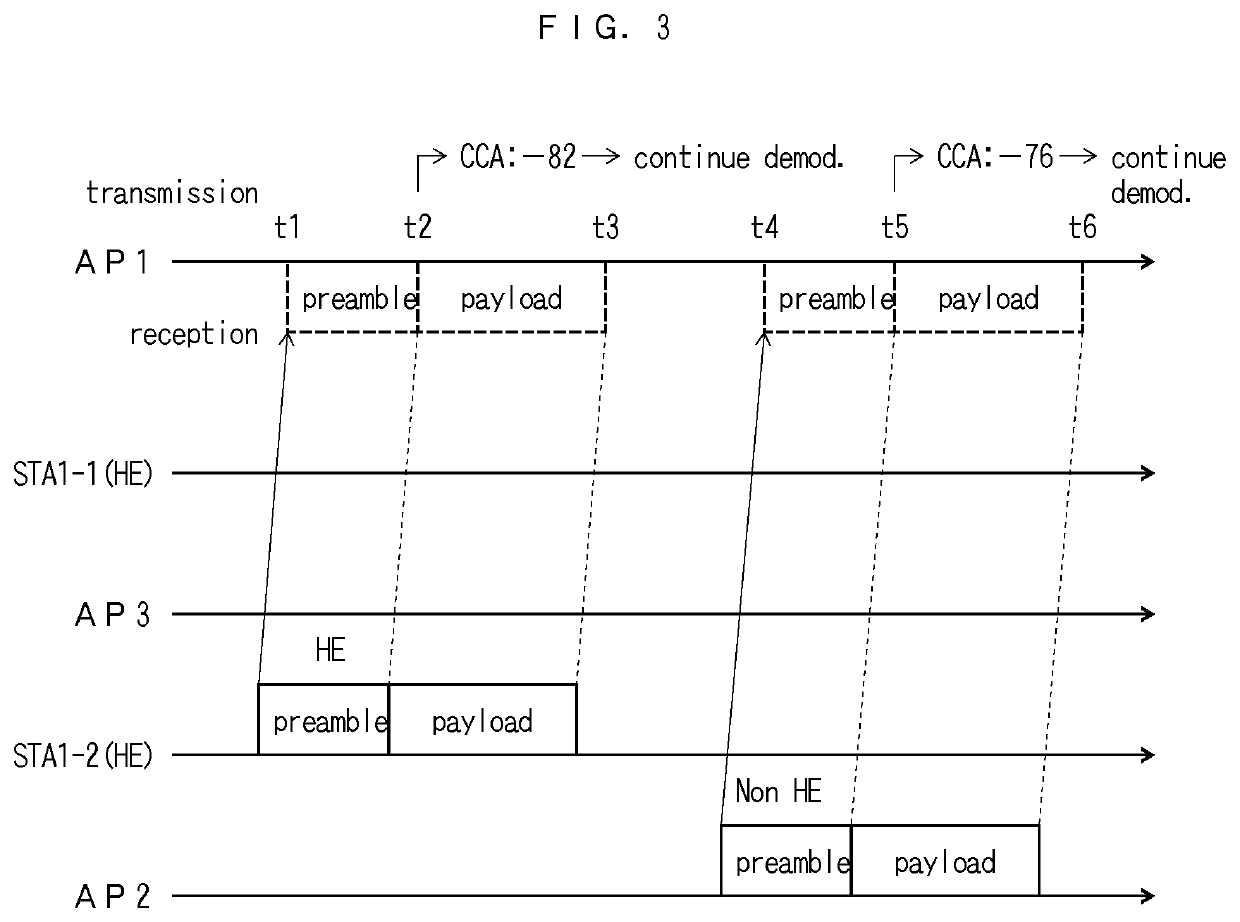Wireless communication system and wireless communication method
a wireless communication and wireless communication technology, applied in the field of wireless communication system and wireless communication method, can solve the problems of reducing throughput, reducing transmission opportunity (an opportunity to obtain channel access rights), and reducing throughput, so as to improve throughput, stop demodulation processing, and increase transmission opportunity
- Summary
- Abstract
- Description
- Claims
- Application Information
AI Technical Summary
Benefits of technology
Problems solved by technology
Method used
Image
Examples
first embodiment
[0064]In the first embodiment, it is assumed that all stations which have to perform communication with the AP 1 are placed within a range of a single-digit meter in which tethering is performed. For example, in FIG. 1, if only the STA 1-1 and the STA 1-3 are present in the vicinity of the AP 1, receiver sensitivity of the AP 1, for example, is set to −62 dBm or more. Accordingly, it is possible that the AP 1 performs simultaneous transmissions to the STA 1-1 and the STA 1-3 more simply than the AP 1 controls the CCA threshold.
[0065]A control server, which is connected to each AP in a shared manner and in a wired or wireless manner, can set receiver sensitivity that corresponds to a communication area, which is controlled by each AP. In FIG. 1, the AP 1 measures receive signals from the STA 1-1 and the STA 1-3 or RSSIs of wireless signals that are transmitted from the AP 2 to AP 4 in the vicinity, and notifies the control server of results of the measurement. If the RSSIs from the S...
second embodiment
[0067]A feature of the second embodiment is that a CCA threshold of each receive frame format in the AP 1 is controlled. At this point, the CCA threshold is controlled to be a high value, for example, −66 dBm that is illustrated in FIG. 1, in such a manner that the simultaneous transmissions are positively performed in a frame in the HE format. From the perspective of the fairness, when it comes to a frame in the Non-HE format, the CCA threshold is controlled to be a default value, for example, −82 dBm that is illustrated in FIG. 1, or to be a value that is lower than the CCA threshold for the HE format, for example, −76 dBm that is illustrated in FIG. 1. It is noted that the CCA threshold for the HE format may be set to be in a fixed relationship to the CCA threshold for the Non-HE format, for example, be set to be higher by 10 dB, and so forth.
[0068]FIG. 2 illustrates a first example of a procedure for the AP 1 to perform receiving processing in the second embodiment of the presen...
third embodiment
[0097]A feature of the third embodiment is that each type of the receive frame in the AP 1 is controlled. At this point, a frame type is read when receiving the frame, and is received and demodulated as is. However, the demodulation is stopped, and thus, it is selected whether or not the simultaneous transmissions are set to be possible. For example, if a data frame is received, the simultaneous transmissions are positively performed. Although a frame of another BSS is present, if a management frame is present such as a beacon frame of the AP or an association request frame of the STA, the simultaneous transmissions are kept from being performed, and the reception and the demodulation are preferentially performed. It is noted that because a control frame, such as an RTS, a CTS, or an ACK, has a short frame time length, the advantage of switching the control to the simultaneous transmissions is so small that the control frame may be received and demodulated as is and may be utilized ...
PUM
 Login to View More
Login to View More Abstract
Description
Claims
Application Information
 Login to View More
Login to View More - R&D
- Intellectual Property
- Life Sciences
- Materials
- Tech Scout
- Unparalleled Data Quality
- Higher Quality Content
- 60% Fewer Hallucinations
Browse by: Latest US Patents, China's latest patents, Technical Efficacy Thesaurus, Application Domain, Technology Topic, Popular Technical Reports.
© 2025 PatSnap. All rights reserved.Legal|Privacy policy|Modern Slavery Act Transparency Statement|Sitemap|About US| Contact US: help@patsnap.com



